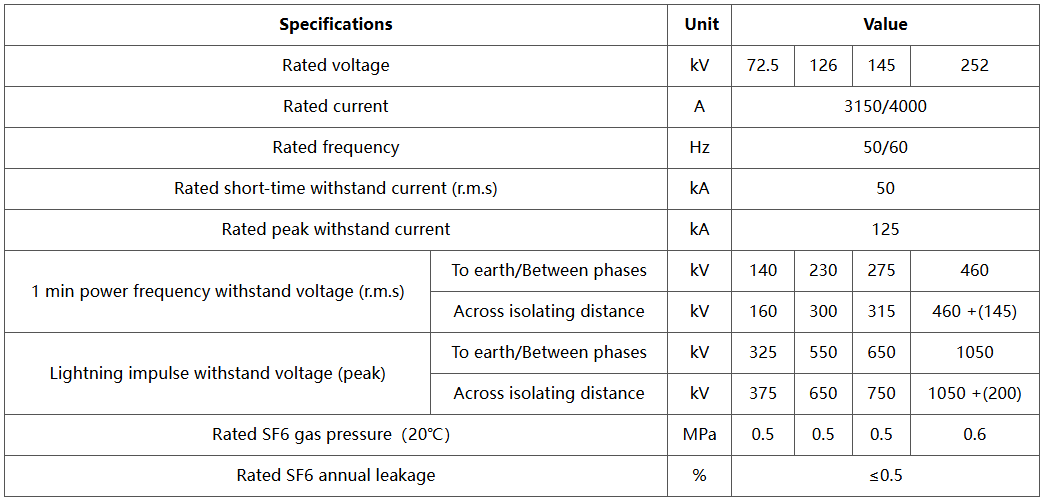| Brand | Wone |
| Model NO. | 72.5KV 126KV 145KV 252KV SF6 Circuit Breaker |
| Rated voltage | 252kV |
| Rated normal current | 4000A |
| Series | LW35 |
Description
LW35 serial circuit breakers, including LW35-72.5, LW35-126, LW35-145 and LW35-252 products, are designed with self-energizing principle that arc generated in the interrupter is distinguished at a specified time with a part of energy produced by the arc itself. They are used for making and breaking normal current, fault current and switching lines to realize the operation (three-pole opening & closing operation and fast automatic-reclosing operation), control and protection of power system.
Main Features
Less consumption of SF6 gas, benefitial for environmental protection. When other kinds of circuit breaker at 0.6 MPa must be filled with SF6 of 27 kg/set, this kind of circuit breaker only need 19.3 kg/set.
Dynamic sealing system adopts advanced Glyd-ring and Step seal to reduce starting friction and prevent leakage.
Adopt imported control valve of stable performance and anti-slow-opening function in case of pressure loss.
Two sets of independent opening control circuit are adopted in hydraulic mechanism with two sets of relay protection to enhance service reliability.
Technical parameter:

What are the purity requirements for SF6 gas in the interrupter of a tank circuit breaker?
SF₆ Gas Purity: The purity of SF₆ gas is generally required to be 99.8% or higher. High-purity SF₆ gas ensures its excellent insulating and arc-quenching performance. The presence of impurities can reduce the insulation strength and arc-quenching capability of SF₆ gas. For example, contaminants such as moisture and air can affect the ionization process and the cooling effect of the arc.
Toxic and Harmful Substances: When SF₆ gas contains a significant amount of impurities, it may produce more toxic and harmful substances under the influence of the arc, posing greater risks to both equipment and human health.






